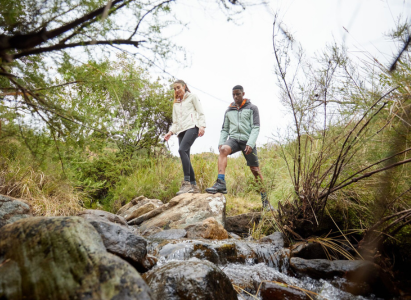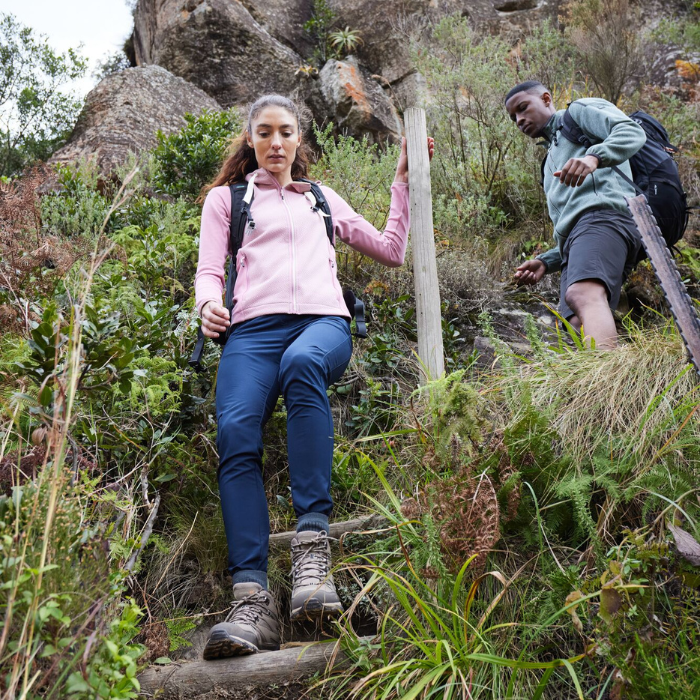
How To Prevent Blisters When Hiking
There's nothing worse than getting half way through an invigorating hike, or reaching the summit of a challenging peak, knowing you've got to complete the rest of your journey dealing with a nasty blister on your foot.
Especially when it could have been prevented in the first place. If you don't want to make that same mistake on your next walk, read on for some of our expert advice.
Here's How To Stop Getting Blisters On Your Walk
If you've experienced blisters when walking before, you'll first need to figure out what caused it. Were you wearing a new pair of shoes? Have you grown out of your old ones? Were your socks suitable? If there's something fairly obvious that could have caused blistering, then that's what you should be looking to remedy. For those that don't often get blisters, some of the most common areas prone to blistering on the feet are the toes, heel and underfoot.
Preventative Measures Against Blisters
Blisters (in this instance) form from a combination of damp feet and friction.
As you exercise, your feet will begin to sweat over time, thus making you more prone to a blister forming from your shoe rubbing your foot. There are a few things you can do to help with this natural moisture build-up, such as:
- Take regular breaks, taking your shoes off when doing so in order to let your socks breathe.
- Bring a second pair of socks to change into (particularly useful if it's raining on your hike).
- Put some talcum powder on your feet.
Equally, water is just as much of a threat as sweat is.
Be careful when you're splashing through puddles or crossing a stream/brook, especially if you're wearing a pair of waterproof walking boots.
Waterproof footwear is very effective in keeping water out, but should an ample amount of water find its way in, they'll need to be dried properly otherwise they will stay damp, as that very same waterproof technology will keep some of that water held inside the shoe despite how breathable some pairs may be.
To reduce friction, some other measures you can include are:
- Make sure your walking boots fit correctly and aren't too tight. (This is the #1 most important factor)
- Empty any dirt, sand or tiny stones out of your shoe.
- Wear two layers of socks (one thin sock, one thicker, softer sock) so that rubbing from your outer sock occurs against the wool/cotton of the inner sock rather than directly onto your skin.
- Apply tape or a plaster to the back of your heel or any other sensitive areas before your journey if you are prone to blistering.
- Tie your shoes properly to prevent slippage causing friction. See the "Heel Slip Lacing" on our lacing guide.
- Use walking poles to take some pressure off your feet - less force on each step means less friction and a lower chance of blisters forming (poles help reduce strain and improve stability.

Invest In Some Walking Socks
Walking socks (otherwise known as trail socks) are designed to provide a high level of underfoot protection. Here at Regatta, our walking socks help to target four different pain points around the foot.
There's increased padding on the underfoot in order to help absorb impact upon each step, reinforced instep protection to reduce pressure from laces, ribbed ankle cuffs for enhanced support and padding around the toes to help prevent rubbing.
Insoles
If you usually experience blister underneath your feet, it's worth considering some insoles. Insoles are only recommended if your footwear will continue to fit you properly once inserted, however they're a viable alternative to wearing multiple layers of socks to counter blistering on the underfoot.
Insoles will enhance comfort from the inside of your shoe, but your feet will now be raised closer to the laces and potentially prone to a new area of blistering. So long as your shoes are laced accordingly and still fit correctly, you shouldn't experience this issue.

Toe Sock Liners
One of our recommendations is to wear two pairs of socks if possible, however if you haven't got any suitable thin socks, it might be worth picking up some toe sock liners.
Toe sock liners are essentially a base layer for your feet, they're very thin and fit close to the skin much like a pair of gloves. When wearing toe sock liners under another pair of socks, any rubbing that occurs is transferred between the two fabrics, rather than causing friction directly against your skin and ultimately preventing a blister from forming.
Wear Shoes Designed For Hiking
Chances are, if you don't own a pair of walking boots or walking shoes, you'll go on your hikes whilst wearing your favourite pair of trainers.
While this initially sounds like a good idea (they're broken in and fit you well, of course), trainers aren't as useful on the uneven, craggy surfaces you'll encounter on a hike.
That's because the soles are often flat with a stylised design rather than a functional one, whereas walking footwear uses both grippier materials such as rubber and a lugged design on the soles.
Equally, some trainers just aren't designed to deal with wet weather conditions, allowing rain and puddle water to seep into your socks which will inevitability lead to a blister developing.
If you want to wear something styled closer towards a pair of trainers, you're best off picking up a pair of trail running shoes.
They'll be able to provide you with some good traction without the excess bulk of a full blown pair of walking boots.

Thinking of getting a new pair of walking boots? Check out some of our useful guides:
- How To Choose Which Walking Boots Are Right For You
- How To Fit Walking Boots
- How To Wear In Walking Boots
- How To Clean Walking Boots
No matter what type of shoes you end up hiking in, the most important factor is how they fit. Regardless of the preventative measures you take to stop blistering, poorly fitting shoes will compromise all of them. Ideally, you should go shoe shopping after you've been on your feet for a while, as your feet will expand throughout the day. To discover more about Regatta footwear, have a read of our buyer's guide.
There are other medical related reasons as to why blisters can occur, as well things such as sunburn. This article is directed towards those that experience blistering exclusively from hiking. If you are experiencing any unrelated blistering, we recommend seeking medical advice from your local GP.
